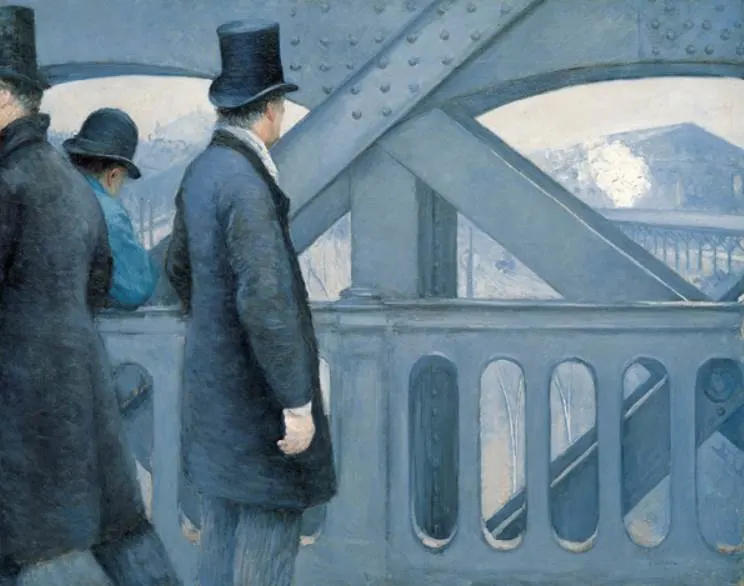The history of the Kimbell Art Museum goes back to 1931, the year that rich businessman Kay Kimbell was introduced to the world of art by his wife Velma.
They visited an art exhibition in Forth Worth, Texas, and he got the taste of collecting art after buying a painting at this event.
The couple established the Kimbell Art Foundation in 1935 with the idea to establish an art institute. They continued to collect fine art in the following decades.
By the time that Kay passed away in 1964, they had amassed an amazing collection of fine art. This collection formed the base of the museum after it was donated to the foundation.
The museum in Forth Worth was established in 1972 and apart from housing a permanent art collection, it also hosts art exhibitions and features a research library.
The building in which the permanent collection is housed is just as impressive as the works of art inside it. Let’s check out some of the highlights of the Kimbell Art Museum.
1. The Torment of Saint Anthony – Michelangelo
- Date created: 1487-1488
- Dimensions: 47 × 35 centimeters (18.25 × 13.75 inches)
The Torment of Saint Anthony is a painting by Michelangelo (1475-1564), one of the most famous Renaissance artists in history. This painting in the collection of the Kimbell Art Museum is a fascinating work of art because it’s the first known painting that Michelangelo completed.
He was still only 12 to 13 years old at the time which means that he was still a pupil in the studio of Domenico Ghirlandaio (1449–1494). The young Italian artist copied a famous engraving of the same subject by Martin Schongauer. It depicts Saint Anthony being tormented by demons in the desert but resisting them. This was a popular m

2. The Cardsharps – Caravaggio
- Date created: 1594
- Dimensions: 94 × 131 centimeters (37 × 52 inches)
The Cardsharps is a fascinating painting by Caravaggio (1571-1610), the Baroque master who became a massive influence on other artists of the 17th century. He completed this work shortly after the had left the workshop of Cessari in Rome and while he was trying to make his own way as a successful artist in city.

The painting depicts a realistic scene of a game of cards in which one young boy tries to dupe his opponent with the help of an older man. The boys wear expensive contemporary clothes, a rare sight in such a common scene. It would take many years before he reached superstar level but this painting helped Caravaggio a lot during this phase of his career.
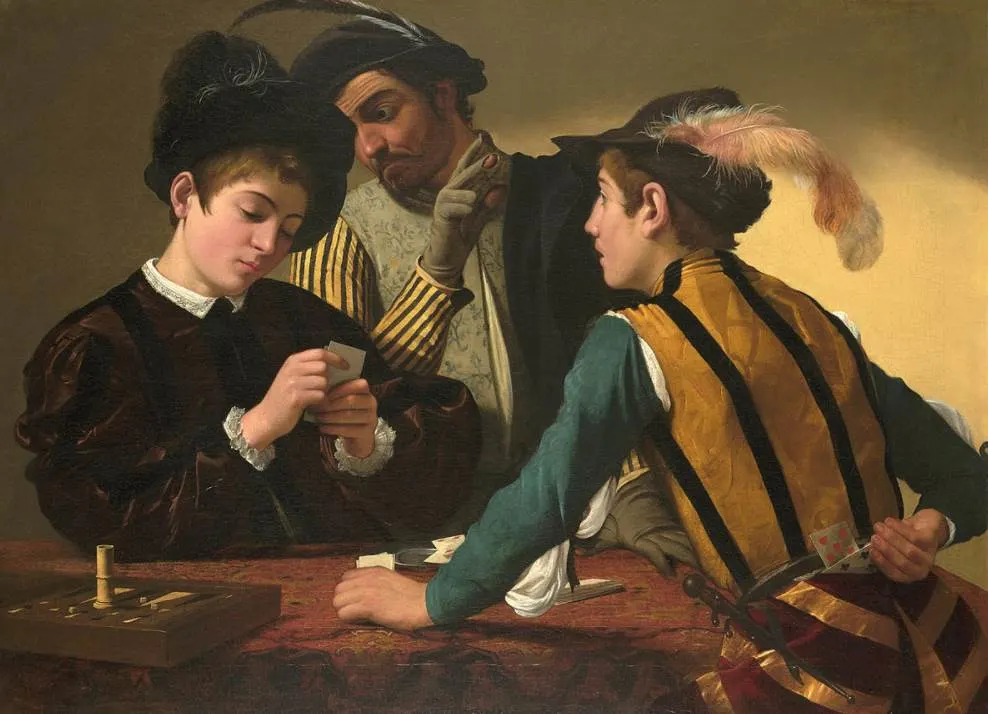
3. The Cheat with the Ace of Clubs – Georges de La Tour
- Date created: 1630-1634
- Dimensions: 97.8 x 156.2 centimeters (38.5 x 61.5 inches)
The Cheat with the Ace of Clubs is a painting by French artist Georges de La Tour (1593-1652). It was inspired by The Cardsharps by Caravaggio as it depicts a similar scene of people cheating during a card game. De La Tour included several other figures in this work whose origins can be traced back to the Biblical story of the Prodigal Son.
It was the only painting produced by the French master of the Baroque era because he completed a similar work titled “The Card Sharp with the Ace of Diamonds” between 1636 and 1638. This painting is part of the collection of the Louvre in Paris. Both paintings are defined by the remarkable use of color and amazing costumes worn by the players.

4. The Raising of Lazarus – Duccio di Buoninsegna
- Date created: 1310-1311
- Dimensions: 43.5 x 46.4 centimeters (20.87 x 22.12 inches)
The Raising of Lazarus is a painting by Gothic artist Duccio di Buoninsegna (who died in 1319), a man born in the 13th century. He was the leading artist of his time, a period in history that which Byzantine art was still the dominant influence on artists all across Europe. It as also before oil was the main painting material as it was produced with tempera and gold on a panel.
He was one of the first artists who integrated naturalistic elements that define Renaissance paintings and can therefore be described as a pivotal artist in the early Renaissance period. This painting depicts a popular Biblical story and was originally part of a larger work that featured scenes from the life of Christ.

5. The Butcher’s Shop – Annibale Carracci
- Date created: early 1580s
- Dimensions: 59.7 × 71 centimeters (23.5 × 27.93 inches)
The Butcher’s Shop is one of two paintings with the same subject by Annibale Carracci (1560-1609), the Italian Baroque master who established the first art academy in Italy in his native Bologna. The style of his paintings was influenced by both Venetian and Roman artists of the 16th century.
The painting at the Kimbell Art Museum is the smallest version of the Butcher’s Shop. Another monumental painting of this subject is part of the collection of the Christ Church Picture Gallery in Oxford, England. Together with “The Beaneater,” they are considered highly influential Italian genre paintings.
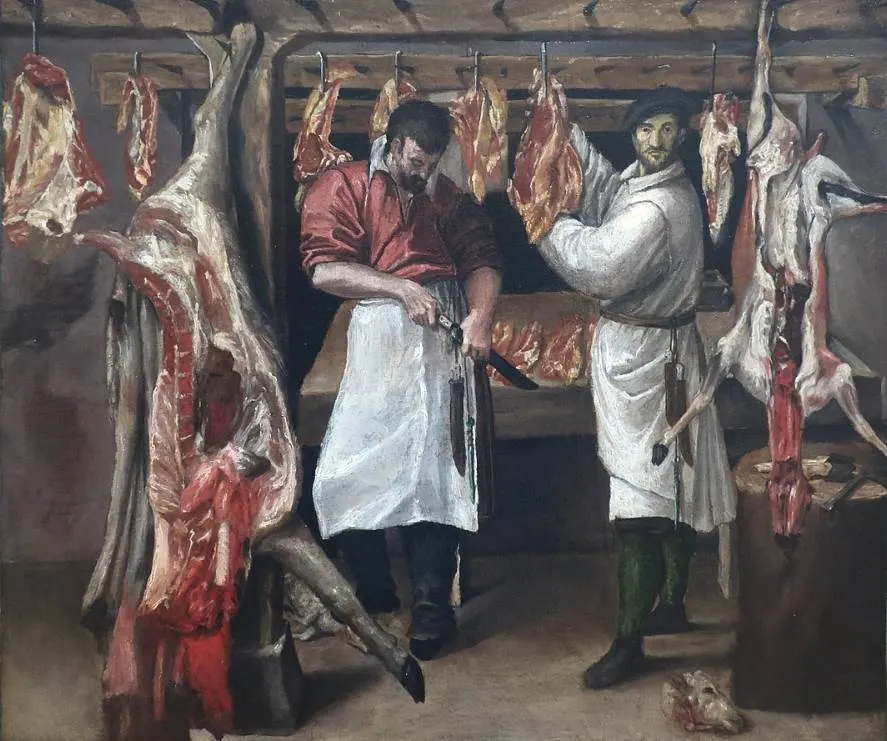
6. Portrait of Francisco de Pisa – El Greco
- Date created: 1610-1614
- Dimensions: 107 × 90 centimeters (42 × 35 inches)
The Portrait of Francisco de Pisa is one of the masterpieces by El Greco, a man who was born in modern-day Crete, Greece, as Domḗnikos Theotokópoulos (1541-1614). Art historians generally agree that this painting depicts Francisco de Pisa, a Spanish cleric, historian, and writer.
Francesco de Pisa is best known for his criticism of Teresa of Ávila, a Spanish noblewoman who became a religious reformer, a Carmelite nun, and who invented mental prayer. She is best known for being the subject of “The Ecstasy of Saint Teresa,” an incredible sculpture by Bernini. This painting was produced during the final years of El Greco’s life.

7. The Anger of Achilles – Jacques-Louis David
- Date created: 1819
- Dimensions: 105.3 x 145 centimeters (41.4 x 57 inches)
The Anger of Achilles is an amazing painting by Jacques-Louis David (1748-1825), the politically involved Neoclassical artist. It was produced shortly after he was exiled to Brussels following the final Fall of Napoleon. He was a fervent supporter of the French Emperor and he painted him on several occasions, including the monumental “Coronation of Napoleon.”
This was one of his final Neoclassical paintings that depicts a historical event. It depicts a story from Greek Mythology in which Agamemnon reveals to legendary warrior Achilles that he will sacrifice his daughter Iphigenia to please the goddess Artemis. That’s quite a twist of events because Achilles believed that she was about to become his bride.
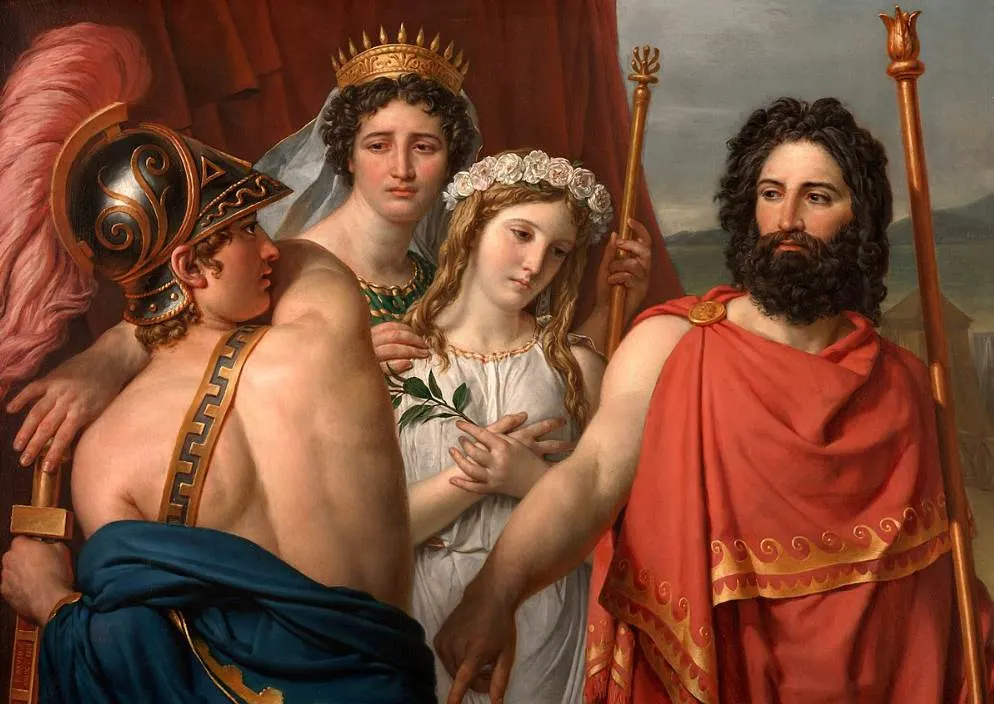
8. Christ Blessing – Giovanni Bellini
- Date created: 1500
- Dimensions: 59 × 47 centimeters (23 × 19 inches)
Christ Blessing is a painting by Renaissance master Giovanni Bellini (1430-1516), one of the leading Venetian artists of his time. It depicts Christ who is raising his hand while he holds a red staff in the other. The visible wounds and shadows are indications that it depicts Christ shortly after his resurrection.
The background is also full of symbols related to Christ’s resurrection. We can see a bird sitting on a tree, a symbol of the Old Convena from which the New Covenant will grow. Rabbits are a symbol of renewal and the three figures in the bottom right corner represent the Three Martyrs.

9. Glaucus and Scylla – J.M.W. Turner
- Date created: 1841
- Dimensions: 78.3x 77.5 centimeters (30.8 x 30.5 inches)
Glaucus and Scylla is a remarkable painting by J.M.W. Turner (1775-1851), a renowned English artist who was one of the leading artists of the Romantic era. His paintings are often dominated by warm colors and depict landscapes and seascapes in a manner that is quite unique in art history.
This work depicts a bright yellow landscape that includes a scene from Ovid’s Metamorphoses. He was a Latin poet who lived during the reign of Roman Emperor Augustus and who published this work in the early 1st century A.D. We can see Glaucus desperately trying to grab the beautiful ocean nymph Scylla.
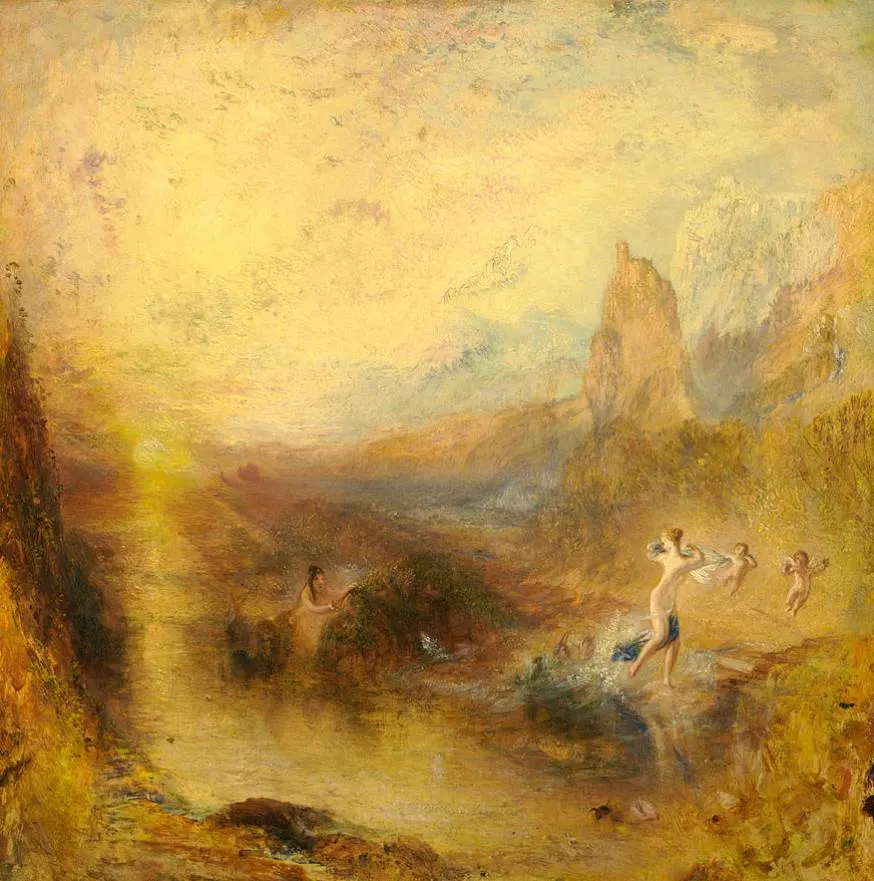
10. On the Pont de l’Europe – Gustave Caillebotte
- Date created: 1876-1877
- Dimensions: 105.7 x 130.8 centimeters (41.62 x 51.5 inches)
On the Pont de l’Europe is a painting by French artist Gustave Caillebotte (1848-1894), a man who is considered to be an Impressionist artist (and who became a patron of the Impressionists), but whose style can’t be defined as such. He preferred to integrate a sense of realism that wasn’t present in Impressionist paintings of his friends and colleagues.
That’s because he was highly interested in the new technology at the time, photography. The figures appearing outside of the frame of the composition are elements that hint at this notion. Caillebotte preferred to paint realistic scenes of life in Paris such as his masterpiece “Paris Street, Rainy Day.” This work depicts a gloomy scene of the Pont de l’Europe which overlooks the Saint-Lazare train station.
